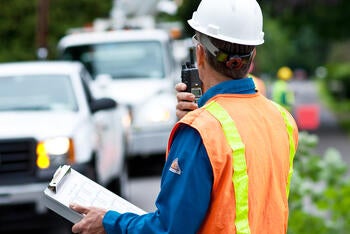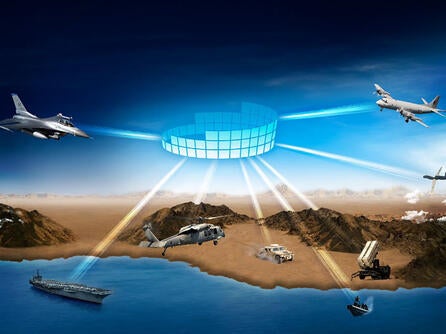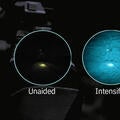Understanding the Real Needs
Customers want something purpose-built to run into a fire with or chase someone down a dark alley, added Butts. “The last thing an undercover cop wants is a smartphone screen lighting up at night, turning them into a target.”
In June, L3Harris launched its second MCPTT integration allowing end users to access a nationwide public safety cellular network using XL portables and mobile equipment.
L3Harris is the first company to provide such a unique solution to first responders and other public safety authorities in the United States and internationally, according to Baker.
The company’s first MCPTT integration has already been deployed with a regional communications provider in the southeast United States in 2023, supporting a state-wide Public Safety agency with thousands of radios deployed to date.
Delivering Standards-based Capability
MCPTT provides customers with game-changing connectivity supported by standards defined by the Third Generation Partnership Project (3GPP). These standards enable communications across LTE, 4G and 5G networks today and 6G in the future. Communications are protected by end-to-end AES 256 encryption.
Today, L3Harris has integrated MCPTT into multiple radio types. These include a mix of portable and mobile systems, such as the XL Converge™, Extreme™ and Onboard™ series of purpose-built products.
MCPTT radios are supported by servers within the LTE and cellular network, so the devices do not require a Land Mobile Radio (LMR) network. However, access to both offers force-multiplying capabilities from the two networks.
The 3GPP standard for MCPTT drives toward “instantaneous communication” so that MCPTT can perform like LMR networks. Network operators are pushing vendors like L3Harris to meet the standard’s key performance indicators, and the partnership has produced impressive results, said Butts.
“LTE networks can suffer from congestion,” said Baker. “For example, without priority and preemption, when an end user tries to make a call, they might be connected, but the calls may not necessarily get through. MCPTT allows the end user to preempt lower priority users on the network who are pushing their calls through the network.”
The network convergence provided by L3Harris’ embedded software also means customers can expand their coverage areas, including building interiors, and identify alternative communication pathways for critical connectivity in event of a crisis or outage – all of which enhances the effectiveness of first responders across the country.
The MCX server, a crucial component to providing mission-critical services, allows administrators to create talk groups, dynamically add and remove users, and push those changes to end users in real time. Future enhancements within the MCX solution allow first responders to share valuable information — including pictures, streaming video feeds, and situational awareness data such as GPS location, heart rate, body temperature, respiration and more — in real time across broadband networks.
Cost-effective Resilience
With the L3Harris XL Converge, Extreme and Onboard series of products, customers can access premium Project 25 LMR and cellular networks from the same radio set, further enhancing resilience in communications and offering a more cost-effective selection for customers.
“This means end users can use native, public safety-grade devices they are already familiar with and also means they are able to afford better quality supporting equipment such as accessories and terminals,” said Baker.
Additional benefits of the radio include the use of “talk-around” technology, which enables line-of-sight communications when there is no network available.
Looking to the future, L3Harris is working with network providers, solution partners and customers to expand MCPTT solutions. The addition of radio centric devices to the MCX solution will open doors to expand the use of MCPTT in public safety.
















